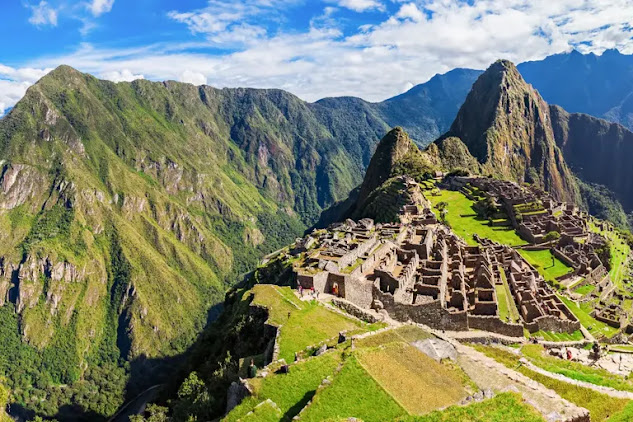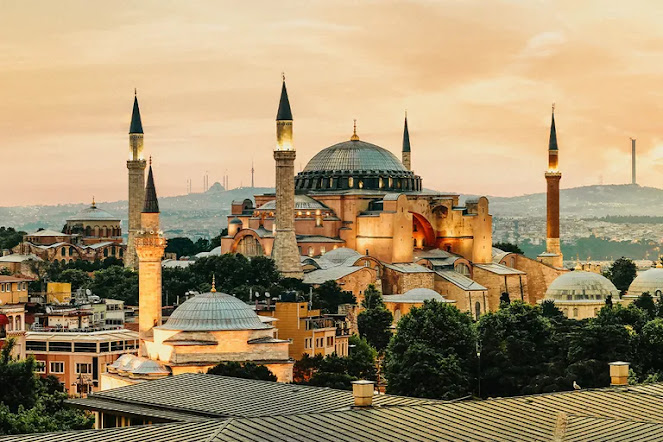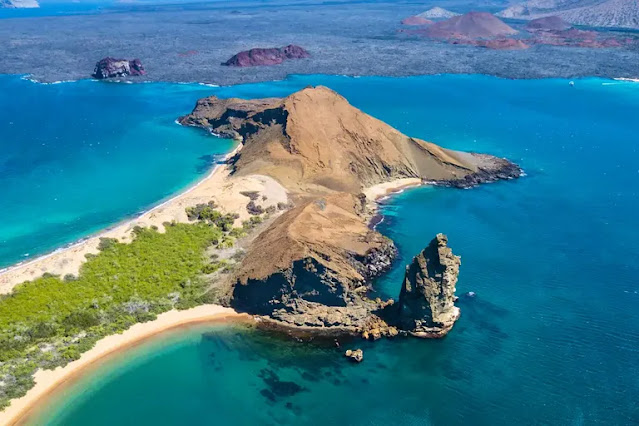The Operach Team - Dream Vacations
Thursday, November 7, 2024
Top 15 Destinations on Every Bucket List
Monday, August 5, 2024
Rome Fun Facts: The Spanish Steps
The Spanish Steps are crowdedBunch of bodies brooding thereDead-pan sidewalk vendorsHustling vacant stares
• There are 135 stairs covering a change in elevation of 29 meters (95 feet).
Thursday, April 25, 2024
10 of Rome's Fabulous UNESCO World Heritage Sites
With each period of growth, new buildings were built on top of old, often repurposing materials and space. Beginning in the 15th century, the story of Rome was reflected in the Renaissance and then during the Baroque period. In many ways, Rome is indelibly linked with the story of Western civilization as the people’s beliefs and values changed over thousands of years.
The following are ten of Rome’s important UNESCO sites. Enjoy!
The Colosseum
In the 12th century, the patrician Frangipani family took over the site and made it a fortified castle; one hundred years later, it was damaged in an earthquake. As with other ancient Roman structures, the Colosseum fell into disrepair, and the materials were repurposed. Supporting iron clamps were melted and reused, and its decorative marble was placed in St. Peter’s Basilica.
Finally, in 1749, Pope Benedict XIV consecrated the Colosseum, giving it protection. From that time forward, the Colosseum has undergone restoration at the insistence of Popes, the city of Rome, and various governments that have come and gone. At almost 2,000 years old, it is one of the best-preserved structures in the world.
The Pantheon
The entrance portico has 16 columns, each made from a single block of Egyptian granite and 39 feet high. Light pours in through the oculus, a 25-foot in diameter opening in the center of the dome, and a 7th century Madonna is above the altar. Besides being a miraculous feat of engineering, the design truly makes a person feel small in comparison to the gods. Walk back into the present world, and you’re on the Piazza della Rotonda, a bustling area of luscious cafes.
Roman Forum
Built during the time of Julius Caesar, the Roman Forum was placed between the Palatine Hill (a very exclusive enclave) and the Capitoline Hill. It was the grandest marketplace, religious center, and political power point in Rome. This heart of the ancient city was bustling with the business of everyday life, the site of processions and elections, public speeches, criminal trials, and commerce.
Many of the Roman Kingdom’s early altars and temples were located on what would
become the southwest edge of the Forum. The first royal residence, the 8th BC Regia, and the Temple of Vesta, along with the grouping of the Vestal Virgins, were here. Now, the sprawling ruins give you a feeling for what Rome was like in its ancient glory days.
Castel Sant’Angelo
The Castel of the Holy Angel became a movie star when it appeared in the movie made from Dan Brown’s book, Angels and Demons. The castle played a hideout for the Illuminati.
Piazza Navona
This Baroque piazza, or plaza, is central to the story of Rome. It is one of the most beautiful squares in this city that is filled with them. Three fountains grace the square: Fontana del Moro, Fontana de’ Calderari, and in the center, the Fountain of Four Rivers. Del Moro has a statue of an Ethiopian fighting with a dolphin. Calderari is known as The Fountain of Neptune. The Fountain of Four Rivers, designed by Bernini, is a large travertine cliff that was formed by a cave with four openings. On the corners of the ‘cliff’ there are marble statues of the four rivers that represent the continents known at that time.
He created a representation of the Danube and a horse for Europe; the Ganges with an oar and dragon for Asia; The Nile with a lion and palm for Africa; and the Rio del la Plata with one raised arm and an armadillo for America. To be surrounded by street artists, stalls, cafes, and buskers while gazing at the fountain is exactly why it’s part of UNESCO. The present blends perfectly with the past.
Piazza del Popolo
Piazza di Spagna
Translated as ‘The Square of Spain’ this piazza was home to the Spanish Embassy for the Vatican. It is central to one of Rome’s most popular neighborhoods. The streets Via dei Condotti, Via Frattina, and the Via del Babuino all have some magnificent 17th and 18th century villas. Near the Piazza del Popolo, you can climb to the top of Pincian Hill for sweeping views.
You must go to the Spanish Steps. Built to connect the piazza with the Church of Trinita dei Monti, no trip to Rome is complete without a pilgrimage to these 135 steps where you can sit with travelers as well as locals. Relax, chat, and enjoy the wonder that is Rome.
Capitoline Hill
Farnese and Quirinale Palaces
Palazzo Farnese is an absolute gem, and a must when you visit Rome. Completed in 1589 and designed by four extraordinary architects, including Michelangelo, you’ll see a 60 foot vault that has frescoes of mythological beings from Ovid’s “Metamorphoses.” These frescoes also offer optical illusions. Taken in all, the overlapping sculptures, paintings, and style are considered to be “a triumph of light, shapes, and colors that have fascinated visitors for more than 400 years.”
Go to the basement, and you’ll see archaeological discoveries from three periods of Ancient Rome. Imagine seeing black and white mosaics of animals, sea monsters, and circus acrobats on horseback. The Palace has been home to the French Embassy since 1874.
The Quirinale Palace is the living center of Italy’s democracy. It not only expresses the creativity and ingenuity of the Italian people over time, it is where the President of the Republic carries out the functions of the government.
Major Basilicas
The sanctuary of this oldest public church in Europe is dominated by a stunning mosaic created by two friars in the 13th century. In the upper part, Jesus is in the clouds, surrounded by angels. The lower has the major saints, the Madonna, a crucifix from which the Holy Spirit is shown as a dove, and flowing water with an abundance of life at the base.
Saint Mary Major is another of the major basilicas, and it has a lovely story. Legend has it that a high-born Roman family renounced their lives and pledged their fortune to the Mother of God—this created the miracle of a summer snowfall. Mary told them to build a church on that site. Every August 5th, a shower of white rose petals flows from the church’s dome.
Saint Paul’s Outside the Walls is not in the heart of Rome, but it’s definitely worth a visit. When Paul was executed in the first century AD, a shrine was built over his grave. By 395 a basilica rose from the spot. The cloister, positively breathtaking, was erected in 1241. Walk inside and you’ll see gigantic marble columns, gold mosaics, a 12th century chandelier, and the marble tombstone of St. Paul. The astonishing atrium has 150 columns. This Basilica may be one of the best ones to visit in Rome.


























